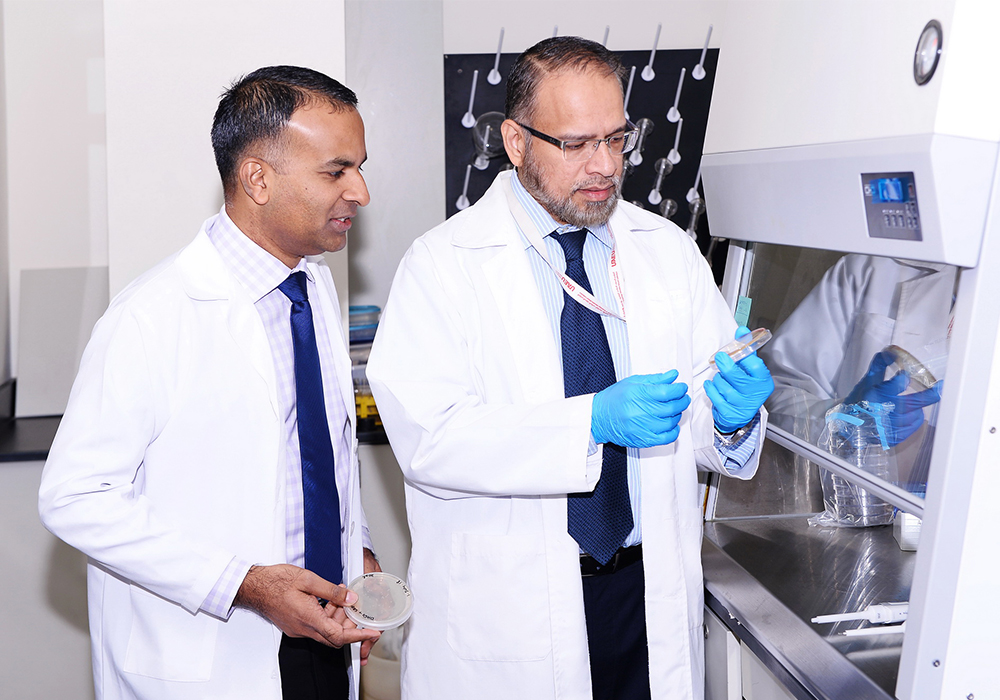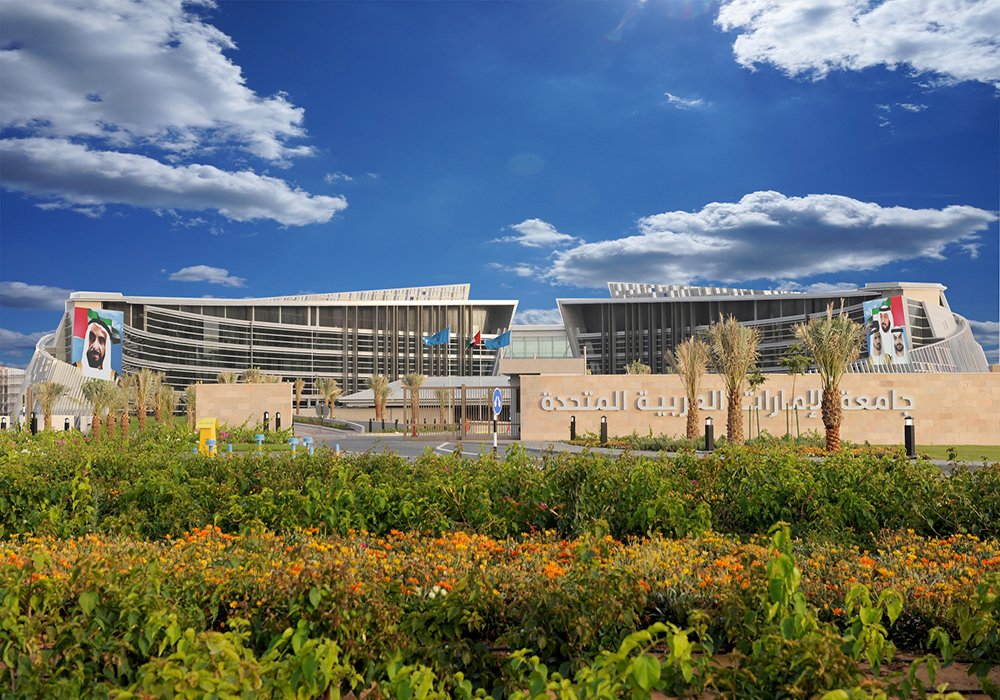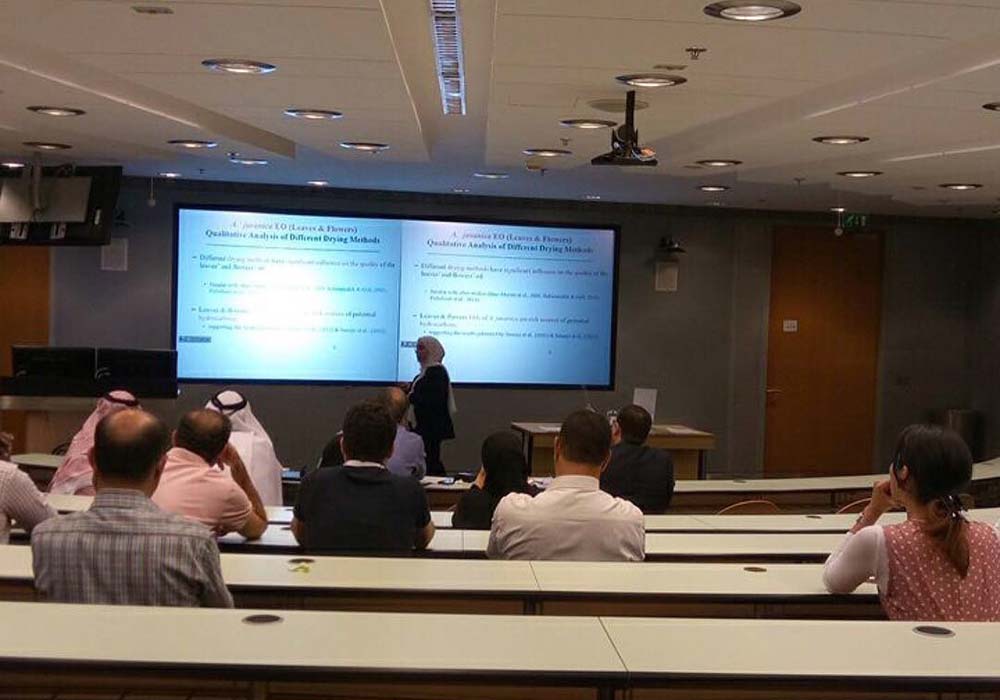Research Corner
 Scientists identify new bacterial strain to clean water
Scientists identify new bacterial strain to clean water
Researchers at the United Arab Emirates University are focusing on one of the UAE’s top priority areas: the future of clean water.
A two-year grant, funded by the university, allowed Professors Salman Ashraf and Ranjit Vijayan to identify a novel strain of bacteria from petroleum sludge that can degrade pollutants in water in a matter of hours.
“The idea was the cleaning up of organic pollutants in water,” said Dr Salman Ashraf, Professor of Biochemistry at the university’s College of Science. “It’s a global issue: water security and water technology are some of the priority areas for the UAE and most developed countries. The problem is we have more and more pollutants like industrial compounds, pesticides, medicines, and personal care products in our water supply.”
A number of scientists have attempted different ways to remove and destroy these so-called emerging pollutants, before degrading them in water.
 The phenomenon of "hidden hunger" is the latent challenge of micronutrient deficiencies
in the Middle East
The phenomenon of "hidden hunger" is the latent challenge of micronutrient deficiencies
in the Middle East
An international study with the participation of UAEU researchers
Enhancing the role of sustainable human development across the food safety system for Gulf people and the Middle East, a designated scientific study has been published in the journal" Nutrients", which was conducted by a research team from the College of Food and Agriculture at the United Arab Emirates University (UAEU), with the participation of nutrition experts in the Middle East and with the support from Pfizer International Pharmaceutical Industries. The study explored the fact that a large percentage of the population of the Middle East suffer from severe shortages and deficiencies in some vitamins and minerals despite the convenience of sunlight throughout the year, but the population suffers from vitamin D deficiency, which plays a big role of the growth and development of bone, however, the absence of sufficient quantity leads to a number of diseases like osteoporosis in adults and the incidence of rickets in children.
Dr. Ayesha Salem Al Dhaheri, Vice Dean of the College of Food and Agriculture at UAEU and the Regional Coordinator of the Gulf and Middle East for Food Data Systems at the UN Food and Nutrition Division, stated that "The Middle East region has experienced profound changes and challenges in the environmental, economic, political and social situation associated with diet, nutrition and health. We see cases of malnutrition associated with infectious diseases such as weight gain, obesity, diabetes and other diseases. For example the change in the standard of living of UAE citizens during the past forty years because of the fast improvement in the socioeconomic situation and this change led to less physical activity and a significant change in their dietary habits by adopting Western habits in food, which in turn led to higher rates of weight gain, obesity and a decrease in the average micronutrient rate for some groups of society.
 Migration critical to survival of dolphin populations, genetic study shows
Migration critical to survival of dolphin populations, genetic study shows
International Team of researchers from United Arab Emirates University, Murdoch University, University of New South Wales, University of Western Australia and University of Hawaii conducted an analysis of dolphin genes that has revealed information about their past migrations, showing just how crucial migrants might be for other populations
A new study by an international team of researchers, investigated genes to find out about past migration of dolphins. By looking at genetic variants in bottlenose dolphins (Tursiops aduncus), the scientists found that one population off Bunbury, Western Australia, was once an important source of migrants. “These dolphin migrants from Bunbury were probably important in supporting the stability of nearby populations” says lead author Dr. Oliver Manlik, Assistant Professor at the United Arab Emirates University. This is in sharp contrast with a previous study had shown that the Bunbury dolphin population may decline because they are currently not producing enough offspring. “If that is now true, then the Bunbury dolphins may no longer be able to continue supplying emigrants to support other populations, putting these other dolphin populations at risk as well” explains Dr. Manlik.
 Researchers map out plant species growth in CO2-enriched environment
Researchers map out plant species growth in CO2-enriched environment
New research has been developed in plant species and their growth in an increased CO2 enriched-environment. As greenhouse gas emissions are expected to double in the next 50 years, from 400 to 750 parts-per million, the research is timely.
“We want to see which plants will be ready for this excess CO2 and we are working on a patent to develop a new irrigation system in both CO2 and water,” said Dr Taoufik Ksiksi, Associate Professor in Biology at the United Arab Emirates University’s College of Science. “The idea is that atmospheric CO2 is increasing, and it is considered one of the most potent greenhouse gases.” The greenhouse gas is a very potent gas, which thickens the blanket around the earth. “That’s where the idea stemmed from,” he said. “In the traditional way of looking at the growth of plants or selecting plants for landscaping or for
 UAEU PhD dissertation sets up first database of local essential oil-bearing plants
UAEU PhD dissertation sets up first database of local essential oil-bearing plants
New research has been developed in plant species and their growth in an increased CO2 enriched-environment. As greenhouse gas emissions are expected to double in the next 50 years, from 400 to 750 parts-per million, the research is timely.
The College of Food and Agriculture at United Arab Emirates University (UAEU) approved a PhD dissertation presented by Suzan Marwan Shahin and supervised by Dr. Mohammed Abdul Mohsen AlYafei, Associate Professor in Aridland Agriculture Department, at a defense attended by faculty members and students.
Speaking on the importance of the study, Ms. Shahin explained, “nowadays, with the growing trends of healthy lifestyle and enormous research-based discoveries, essential oils became a popular, attractive topic for both research and industry, with revenues reaching billions of dollars annually”.
Ms. Shahin showcased the databank, incorporating all the UAE 136 essential oil-bearing plants, which is about 17% of the total local plants. The dissertation highlighted the medicinal value of the essential oils extracted from of Cleome amblyocarpa Barr. & Murb. (Cleomaceae) local plants, and explored in vitro the antioxidant activity of these plants.